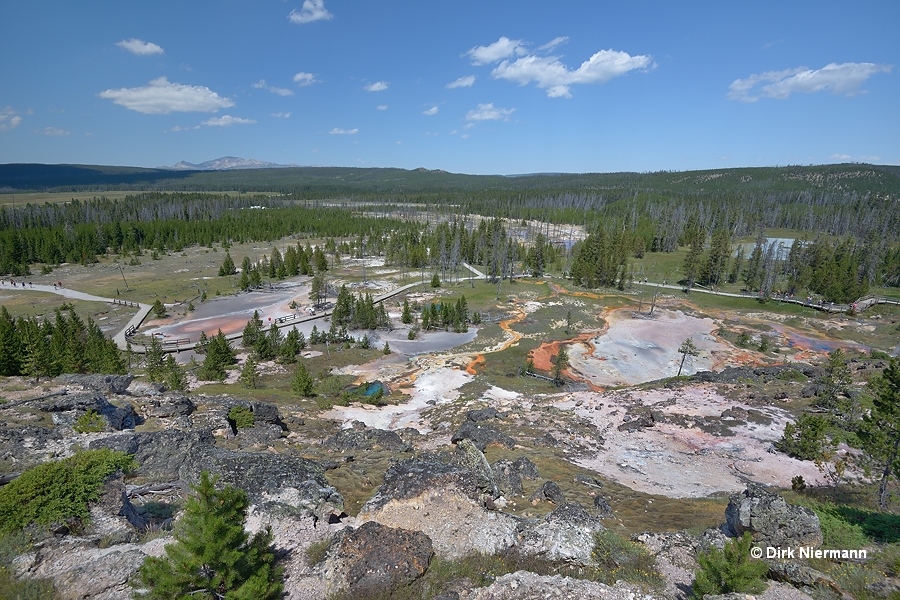Gibbon Geyser Basin of Yellowstone
Gibbon Geyser Basin adjoins Norris Basin to the southwest in direction of Madison Junction. The grassy, orchid filled Gibbon Meadows form the northern part of the basin, followed by the area around Gibbon Canyon in the south, both lined up along Gibbon River. Meadows, river, and canyon are named for Colonel John Gibbon, who participated in the 1872 Hayden Geological Survey of Yellowstone and firstly explored the region. He is even better known for his role in the Battle of the Little Bighorn and in the 1878 pursuit of Nez Perce people led by Chief Joseph and Looking Glass.
Geologically, the 8 km (5 miles) long Gibbon Canyon lies on the topographic margin of the Yellowstone Caldera. It marks the begin of the only major zone of hydrothermal activity that extends far from the caldera northward through Norris Geyser Basin, Roaring Mountain, Horseshoe Hill, and Mammoth Hot Springs.

Gibbon Geyser Basin encompasses nine scattered groups of thermal features, but only two, Artists' Paintpots and Monument Basin, are accessible by maintained trails or boardwalks. Trails to the Geyser Springs and the Sylvan Springs had been established in the past, but they were abandoned and are reconquered by wilderness nowadays. On the one hand both thermal areas are belonging to the most dangerous ones in Yellowstone, on the other hand they are coming with spectacular thermal features, such as Avalanche Geyser and Big Bowl Geyser in the Geyser Springs Group and Evening Primrose Spring and Dante's Inferno in the Sylvan Springs Group. (Update: Unfortunately, both groups have been closed to public entry since 2016). But among the areas of Gibbon Geyser Basin treated like a stepchild are also safe and easy to reach destinations like the fantastic Chocolate Pots.